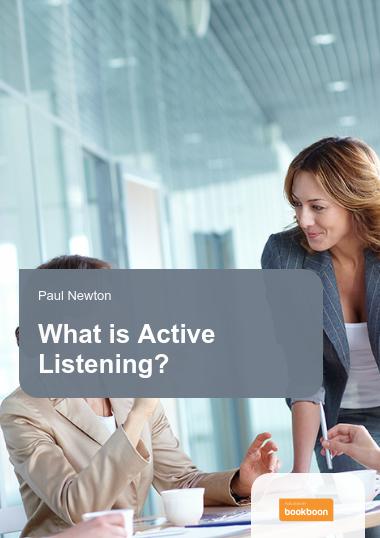

For instance, a child who is naturally athletic may begin to start playing sports in a. These niches that are chosen will strengthen the gene expression. That is fully concentrating on what is being said rather than just passively ‘hearing. Active genotypeenvironment correlation starts around the ages of 8-9 and is when children begin to seek out situations and environments ('niches') that are compatible with their genotype. ' Active listening ' means, as its name suggests, actively listening. However, active listening can be difficult to master and will, therefore, take time and patience to develop. This is not compulsory, but if you choose to. Active listening is a skill that can be acquired and developed with practice.

On the other hand, if we choose to listen actively and engage with others, we are showing them that they matter and forming an alliance, and strengthening relationships. Below is a list of examples you could have a look at as some extra preparation for studying Psychology at A Level. By not listening to someone or passively listening, we are causing strain on that relationship, which can eventually affect our mental health. In other words, we are telling this individual that what they are saying and feeling is not essential at the moment, and as a result, we are minimizing them. Dichotic listening is an experimental technique where different messages are transmitted into each ear of a subject to test selective attention or the ability to concentrate on one message to the exclusion of the other. Sometimes we choose not to listen to another individual because we are too busy or do not want to hear what they say. It is a technique used in counseling and therapy that is comprised of two main elements: the therapist attempts to understand the. This type of listening involves a person (typically a therapist). Reflective listening is a concept developed by Carl Rogers' client-centered therapy (hyperlink) in which the counselor listens to what the client is saying and then reframes the material and repeats it back to them. When we choose not to listen to someone, whether our spouse, coworker, peer, friend, or child, we potentially create a rift in the relationship. alleydog: Active listening comes from the theories of Carl Rogers person-centered-therapy. Many students believe that hearing what is said is the same as listening to what is said.

Therefore, the first stage of active imagination is getting into.
ACTIVE LISTENING DEFINITION ALLEYDOG HOW TO
Introduction While listening is an integral part of effective communication, few students are taught how to listen effectively. Active imagination, as developed by Carl Jung, is a technique for bridging the unconsciousness (dreams, fantasies) and the conscious mind by observing the images that freely appear in our mind in a state of dreaming that reflect our unconscious processes. Hearing and listening and the lack of each can drastically affect our mental health. Active listening is, however, a way of paying attention and responding to others, thereby improving mutual understanding. How listening and hearing can affect our mental health


 0 kommentar(er)
0 kommentar(er)
